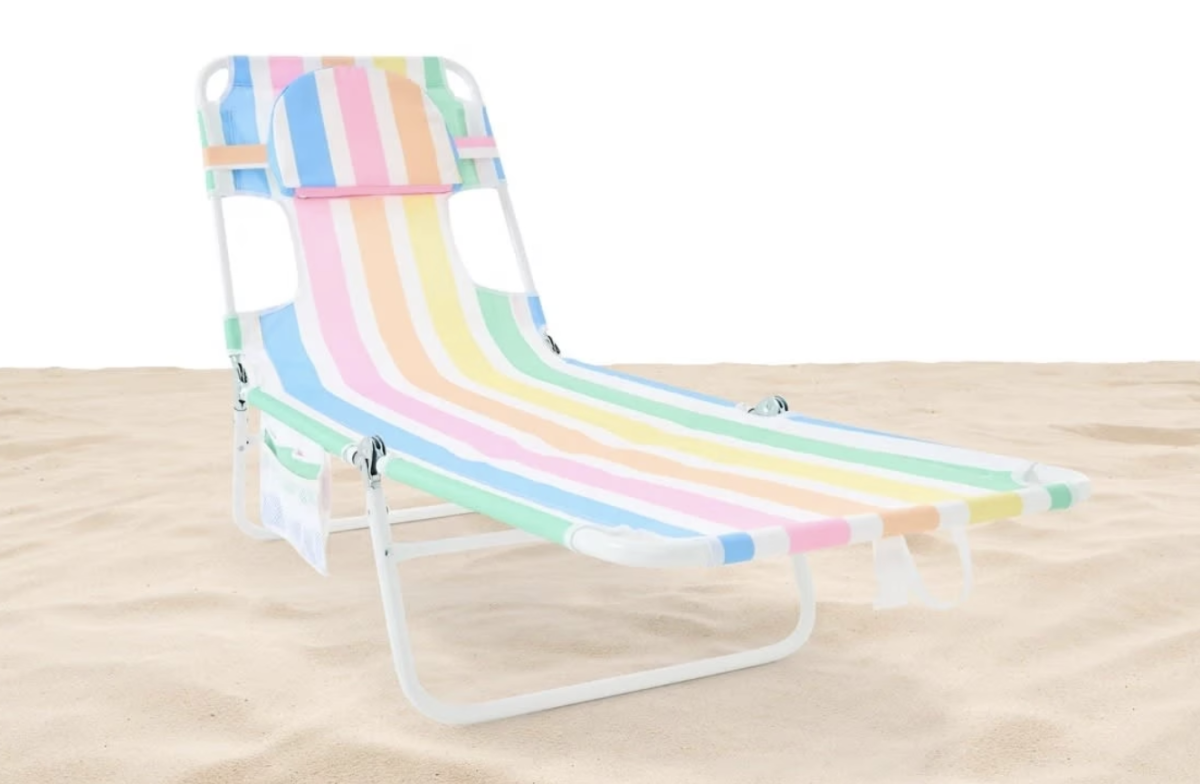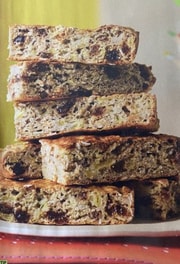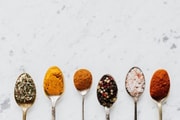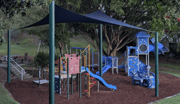
As temperatures climb across Australia and UV readings soar into the danger zone, a popular $39 Kmart product has ignited fierce debate among health experts who say it should carry the same warnings as cigarette packets.
The Face Down Lounger, which sold out online after flying off shelves, promises comfortable 'sunbathing' - a description that has prompted leading cancer specialists to sound the alarm about what they see as irresponsible marketing in the country with the world's highest skin cancer rates.
The controversy that's got experts seeing red
In 2024, it is estimated that the age-standardised incidence rate will be 70 cases per 100,000 persons (86 for males and 56 for females) for melanoma alone, according to Cancer Australia—a significant jump from the 53 cases per 100,000 recorded in 2000.
Professor Anne Cust, Interim Director of the Daffodil Centre (a joint venture between Cancer Council NSW and the University of Sydney), didn't mince words when speaking to Yahoo Lifestyle about the lounger's marketing.
'I think it should come with warnings,' she said. 'To use it to promote suntanning is just dangerous. We have warning signs so you don't suffocate on plastic bags, or so you don't drink when you're pregnant, but I think 'don't suntan in Australia' would be a good warning sign to have on these things.'
'It promotes spending time lying in the sun and in Australia, that's quite dangerous'
The concern stems from Kmart's explicit description of the product being 'designed for sunbathing' - language that health experts argue directly contradicts decades of Australian sun safety campaigns.
Source: @bbcinkent / Instagram.
Australia's skin cancer crisis by the numbers
The statistics paint a sobering picture that makes the marketing controversy even more significant. It is expected that 16,800 Australians will be diagnosed with melanoma this year—that's one diagnosis every 30 minutes, according to Melanoma Institute Australia.
At least 2 in 3 Australians will be diagnosed with skin cancer in their lifetime, with the risk being higher for men than women. In 2024, it is estimated that there will be 1,340 deaths from melanoma, though the mortality rate has been declining thanks to improved treatment and early detection.
Australia's skin cancer reality check
Australia has the highest melanoma rates in the world, earning melanoma the grim nickname of 'Australia's national cancer'
Over 95 per cent of skin cancers are caused by exposure to UV radiation
UV levels can do damage to unprotected skin most of the year, not just in warmer months
Sally Blane, Chair of Cancer Council's National Skin Cancer Committee, emphasised the broader context: 'Every year in Australia, skin cancers account for around 80 per cent of all newly diagnosed cancers, and the majority of skin cancers are caused by exposure to the sun.'
Why seniors need to be especially careful
For older Australians, the message is particularly urgent. While the statistics show melanoma risk increases with age, there's also the accumulated damage factor that many don't fully appreciate.
Professor Cust explained that being badly sunburned, even just once, doubles your risk of melanoma. 'The more times you get sunburned, the higher your risk,' she noted. 'Obviously, not everyone who gets sunburned develops melanoma, but we know from evidence around sun beds and solarium use years ago that the younger a person was exposed to the UV from the sun beds, the higher the likelihood of getting a melanoma at a younger age.'
For those who spent their youth in the era before widespread sun safety awareness—when getting a tan was considered healthy and sunscreen wasn't routine—the damage may already be done. 'You've only got one skin, and [sunburn] damages it for life,' Cust warned.
Smart sun safety for outdoor furniture users
- Only use loungers in shade when UV index is below 3
- Check UV levels via the SunSmart app or Bureau of Meteorology
- Always wear protective clothing, broad-brimmed hat, and sunscreen
- Consider early morning or late afternoon use when UV is naturally lower
- Remember: sunscreen should never be your only protection
The marketing problem extends beyond Kmart
The issue isn't limited to one retailer. Woolworths sells a similar product marketed to 'tanning lovers,' while Temple & Webster promotes their lounger for 'tanning on the beach.' This widespread marketing approach concerns experts who see it as normalising dangerous behaviour.
'It promotes spending time lying in the sun and in Australia, that's quite dangerous, because our UV levels are very high, particularly getting into spring and summer—the UV index is already getting up to around eight in Sydney areas,' Professor Cust explained, noting that northern areas experience even higher readings.
How to stay safe this summer
The good news is that outdoor furniture can be enjoyed safely with the right precautions. Sally Blane shared practical advice for Australians wanting to make the most of their outdoor spaces:
'Most Australians can safely go outside without sun protection when the UV Index is below 3. Check your local UV Index to identify times early in the morning and late afternoon that are below 3. When the UV is 3 or above, you can be safe using any outdoor furniture by placing it in the shade.'
Did you know?
Did you know?
While melanoma was Australia's 7th most deadly cancer in 2011, it had dropped to 11th most deadly by 2024—a testament to improved treatments and earlier detection, though prevention remains the best strategy.
The Cancer Council's five-step sun protection strategy remains the gold standard:
- Slip on sun-protective clothing covering as much skin as possible
- Slop on broad-spectrum, water-resistant SPF50+ sunscreen (never as the only protection)
- Slap on a broad-brimmed hat protecting face, head, neck and ears
- Seek shade whenever possible
- Slide on Australian standard sunglasses
For UV monitoring, download the free SunSmart Global UV app or check the Bureau of Meteorology website.
The retailer response
When contacted about the controversy, Kmart declined to comment on whether they would consider adding sun safety warnings to their product descriptions or modifying their marketing approach.
Professor Cust suggests that responsible marketing would mean either including safety warnings or repositioning such products as shade furniture rather than tanning aids. 'I think that would be fine, but the way it's being promoted is problematic,' she said.
What This Means For You
As Australia heads into another blazing summer with UV levels capable of causing damage most of the year, the debate over how outdoor products are marketed becomes more than academic—it's a matter of public health.
The message from experts is clear: enjoy your outdoor furniture, but do it smart. Your future self will thank you.
What do you think—should retailers be required to include sun safety warnings on products marketed for outdoor use? Have you noticed changes in how sun safety is discussed compared to previous generations? Share your thoughts and experiences in the comments below.
Original Article
https://au.lifestyle.yahoo.com/popu...ous-should-come-with-a-warning-033710859.html
Melanoma of the skin statistics | Cancer Australia
Cited text: In 2024, it is estimated that the age-standardised incidence rate will be 70 cases per 100,000 persons (86 for males and 56 for females).
Excerpt: In 2024, it is estimated that the age-standardised incidence rate will be 70 cases per 100,000 persons (86 for males and 56 for females)
https://www.canceraustralia.gov.au/cancer-types/melanoma-skin/melanoma-skin-statistics
Melanoma Facts—Melanoma Institute Australia
Cited text: 16,800 It is expected that 16,800 Australians will be diagnosed with melanoma this year 30 mins 1 Australian is diagnosed with melanoma every 30 minut...
Excerpt: It is expected that 16,800 Australians will be diagnosed with melanoma this year
https://melanoma.org.au/about-melanoma/melanoma-facts/
Incidence and mortality | National Cancer Prevention Policy Skin Cancer Statistics and Issues | Cancer Council
Cited text: At least 2 in 3 Australians will be diagnosed with skin cancer in their lifetime,[4] and the risk is higher in men than in women.
Excerpt: At least 2 in 3 Australians will be diagnosed with skin cancer in their lifetime
https://www.cancer.org.au/about-us/...resources/skin-cancer-incidence-and-mortality
Melanoma of the skin statistics | Cancer Australia
Cited text: In 2024, it is estimated that there will be 1,340 deaths (892 males and 448 females).
Excerpt: In 2024, it is estimated that there will be 1,340 deaths
https://www.canceraustralia.gov.au/cancer-types/melanoma-skin/melanoma-skin-statistics
Melanoma of the skin statistics | Cancer Australia
Cited text: In 2024, it is estimated that the age-standardised mortality rate will be 4.9 deaths per 100,000 persons (7 for males and 3.0 for females).
Excerpt: In 2024, it is estimated that there will be 1,340 deaths
https://www.canceraustralia.gov.au/cancer-types/melanoma-skin/melanoma-skin-statistics
Melanoma Facts—Melanoma Institute Australia
Cited text: Australia has the highest melanoma rates in the world.
Excerpt: Australia has the highest melanoma rates in the world
https://melanoma.org.au/about-melanoma/melanoma-facts/
Melanoma Facts—Melanoma Institute Australia
Cited text: Melanoma is often referred to as 'Australia's national cancer'.
Excerpt: 'Australia's national cancer'
https://melanoma.org.au/about-melanoma/melanoma-facts/
About Skin Cancer | Cancer Council NSW
Cited text: Over 95 per cent of skin cancers are caused by exposure to UV radiation.
Excerpt: Over 95 per cent of skin cancers are caused by exposure to UV radiation
https://www.cancercouncil.com.au/skin-cancer/about-skin-cancer/
About Skin Cancer | Cancer Council NSW
Cited text: Across Australia, the UV levels can do damage to unprotected skin most of the year, not just in warmer months.
Excerpt: UV levels can do damage to unprotected skin most of the year, not just in warmer months
https://www.cancercouncil.com.au/skin-cancer/about-skin-cancer/
Melanoma Facts—Melanoma Institute Australia
Cited text: In 2011, melanoma was Australia’s 7th most deadly cancer. In 2024, melanoma was Australia’s 11th most deadly cancer.
Excerpt: While melanoma was Australia's 7th most deadly cancer in 2011, it had dropped to 11th most deadly by 2024
https://melanoma.org.au/about-melanoma/melanoma-facts/







